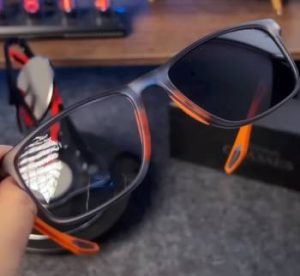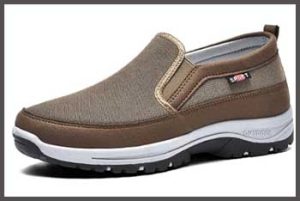I’ve been on a quest for a robot vacuum that makes life easier, and the Roomba i3 and i4 caught my eye for their smart features and pet-friendly design.
Priced around $250-$350, they promise powerful cleaning with minimal fuss.
In this review, I’ll share my experience, break down pros and cons, compare them to five other brands, and offer maintenance tips.
Despite their strengths, mixed reviews make me hesitant to fully endorse them.
Read on to see if the i3 or i4 fits your home—you’ll want the full scoop!
My Experience with Roomba i3 and i4
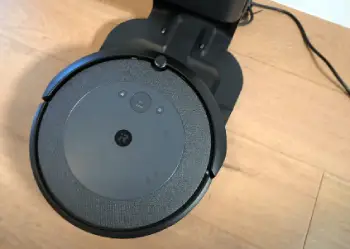
I tested both the Roomba i3 and i4 in my pet-filled home with hardwood and low-pile carpets.
The i3’s sleek gray design and the i4’s slightly darker finish looked modern in my living room.
Setup was a breeze with the iRobot Home app, though the i3 struggled with Wi-Fi initially.
Both vacuums navigated in neat rows, tackling pet hair and crumbs with their dual rubber brushes.
The i3+’s self-emptying dock was a game-changer, but the i4’s longer 100-minute battery life handled my 1,200 sq. ft. space better.
I loved the app’s scheduling feature, but both models missed fine dust on hardwood and got stuck on rug edges occasionally.
The i4’s virtual wall accessory helped block off my dog’s water bowl, unlike the i3.
Cleaning was decent, but emptying the i3’s dustbin manually was a chore without the Plus model.
You’ll appreciate the hands-off vibe, but don’t expect flawless performance.
What Makes Roomba i3 and i4 Stand Out
iRobot, a pioneer since 2002, crafted the i3 and i4 for mid-range budgets.
Launched in 2020, both feature a 3-Stage Cleaning System with 10x the suction of Roomba’s 600 series.
The i3+ and i4+ include a Clean Base for self-emptying, holding 60 days of debris.
Their rubber brushes resist pet hair tangles, and smart navigation maps your home.
At ~$250 for the i3 and ~$300 for the i4, they’re affordable but lack advanced features like no-go zones.
You’ll like the pet-friendly design, but connectivity issues and spotty cleaning may frustrate.
How I Use Roomba i3 and i4 in My Routine
I schedule my i3 or i4 to run daily via the iRobot Home app while I’m at work.
The i4’s virtual wall keeps it away from my cat’s litter box, and I set both for two passes on high-traffic areas.
The i3+ empties itself, saving me time, but the i4’s longer runtime suits my larger rooms.
I manually clean the brushes weekly to avoid clogs.
Both handle pet hair well, but I spot-clean fine dust afterward.
You’ll find them convenient for daily upkeep, but they need babysitting for optimal results.
Key Features of Roomba i3 and i4
The i3 and i4 share a 0.5L dustbin, dual rubber brushes, and iAdapt 3.0 navigation for efficient row cleaning.
The i4’s 100-minute battery outlasts the i3’s 75 minutes, and it includes a virtual wall and extra filter.
The Plus models’ Clean Base empties debris automatically, reducing maintenance.
Both integrate with Alexa and Google Assistant, but lack advanced mapping like keep-out zones.
I found the suction strong but struggled with fine debris on hard floors.
You’ll enjoy the smart features, but the i3’s bare-floor performance and i4’s cost may disappoint.
Pros of Roomba i3 and i4:
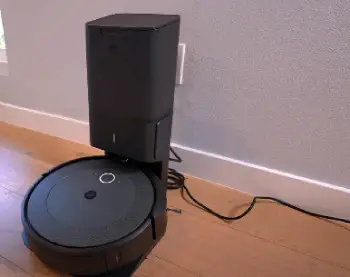
- Pet-friendly brushes: Rubber rollers resist hair tangles.
- Self-emptying option: Plus models empty for 60 days.
- Strong suction: 10x power compared to 600 series.
- Smart navigation: Cleans in neat rows with mapping.
- App control: Schedule and monitor via iRobot Home.
- Voice compatibility: Works with Alexa and Google Assistant.
- Durable design: Sturdy build for daily use.
- Allergy filter: Captures 99% of dust and allergens.
- Recharge and resume: Continues cleaning after charging.
- Compact size: Fits under most furniture.
Cons of Roomba i3 and i4:
- Wi-Fi issues: Connectivity can be spotty.
- Misses fine debris: Struggles on hardwood floors.
- No keep-out zones: Lacks advanced mapping features.
- High recurring costs: Filters and bags add up.
- Frequent maintenance: Brushes need regular cleaning.
- Gets stuck: Snags on rug edges or cords.
- Noisy operation: Louder than some competitors.
- Limited dustbin: Non-Plus models fill quickly.
- No mopping: Lacks dual vacuum-mop functionality.
- Pricey accessories: Clean Base costs extra for non-Plus.
I love the pet hair pickup and self-emptying convenience of the i3+ and i4+, but Wi-Fi hiccups and missed debris on hardwood bugged me.
The i4’s extra battery life and virtual wall are nice, but not game-changing.
You’ll like them for pet-heavy homes, but don’t expect perfection on all surfaces or seamless app use.
Maintenance Tips for Roomba i3 and i4
- Clean brushes weekly: Remove hair from rubber rollers to prevent clogs.
- Empty dustbin: Non-Plus models need manual emptying after each run.
- Replace filters: Swap high-efficiency filters every 2-3 months.
- Check sensors: Wipe cliff and dirt sensors to ensure navigation.
- Clear wheels: Remove debris from side wheels to avoid jams.
- Inspect Clean Base: Check Plus model bags every 30-60 days.
- Store properly: Keep in a dry, cool place when not in use.
- Update app: Ensure iRobot Home app is current for connectivity.
- Clean dustbin: Wash non-Plus bins monthly with water.
- Check battery: Monitor charge cycles to maintain performance.
I clean my i3’s brushes every Sunday to keep it running smoothly and check the app for updates.
The i4’s extra filter saves me a purchase, but I still empty the non-Plus bin daily.
Wiping sensors prevents navigation errors, and I store my Roomba away from heat.
You’ll want to stay on top of these tasks to avoid performance dips.
Also Read: Comparison of Bona Vs. Swiffer
Comparison with Other Brands
- Roomba i3/i4 Vs. Roborock Q5 Max+
I tested the Roborock Q5 Max+ (~$400) for its LiDAR mapping, which outshines the i3/i4’s basic navigation.
Its app lets you set no-go zones, unlike Roomba’s limited mapping.
The Q5 Max+ vacuums and mops, handling hardwood better than the i3/i4, but misses some edge debris.
Its self-emptying dock was more reliable, sucking up all debris.
Battery life matches the i4 at 100 minutes, but it maps faster.
You’ll pick Roborock for advanced features and mopping, but the i3/i4’s rubber brushes are better for pet hair.
- Roomba i3/i4 Vs. Eufy RoboVac 11S Max
The Eufy RoboVac 11S Max (~$200) is a budget champ I tried for small spaces.
Its slim design slips under furniture better than the i3/i4, but lacks smart mapping, bouncing randomly.
It outperformed the i3 on hardwood, picking up fine dust, but struggled with pet hair compared to Roomba’s rubber brushes.
No self-emptying or app control makes it less convenient.
Battery life is 100 minutes, like the i4.
You’ll choose Eufy for affordability and hard floors, but i3/i4 wins for pet owners and smart features.
- Roomba i3/i4 Vs. Shark EZ Robot Self-Empty
I used the Shark EZ Robot Self-Empty (~$350) for its large external dustbin, which holds more than the i3+’s Clean Base.
Its mapping is basic like the i3/i4, but it maneuvers better around obstacles.
It outperformed the i3 on bare floors but tangled with pet hair, unlike Roomba’s brushes.
The app is less intuitive than iRobot’s.
Battery life is 90 minutes, slightly less than the i4.
You’ll go for Shark for durability and dustbin size, but i3/i4 excels for pet hair and voice control.
- Roomba i3/i4 Vs. iRobot Roomba j7
The Roomba j7 (~$500) is iRobot’s smarter sibling I tested for obstacle avoidance.
Its camera dodges cords and pet waste, unlike the i3/i4, which got stuck.
Mapping is more precise, with keep-out zones missing in the i3/i4.
It matches the i3+’s self-emptying but cleans carpets better.
Battery life is 90 minutes, like the i4.
The j7’s app is smoother, but it’s pricier.
You’ll pick the j7 for advanced navigation, but i3/i4 is more budget-friendly for basic cleaning needs.
- Roomba i3/i4 Vs. Ecovacs Deebot N8 Pro+
I tried the Ecovacs Deebot N8 Pro+ (~$450) for its LiDAR navigation and mopping.
It maps faster than the i3/i4 and offers no-go zones, making it more precise.
Its vacuum-mop combo tackled hardwood better, but pet hair tangled in its bristles, unlike Roomba’s rubber brushes.
The self-emptying dock is reliable, and battery life hits 110 minutes.
The app is user-friendly but glitchy.
You’ll choose Ecovacs for mopping and mapping, but i3/i4 is better for pet-heavy homes on a budget.
Performance Across Floor Types
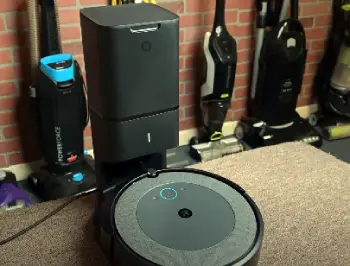
On my hardwood floors, the i3 and i4 picked up pet hair but left fine dust behind, requiring manual cleanup.
Low-pile carpets fared better, with strong suction tackling crumbs.
High-pile rugs tripped them up, with occasional snags on edges.
The i4’s longer runtime helped in larger rooms, but both struggled with transitions.
Dirt Detect mode focused on messy spots, but results were inconsistent.
You’ll find them solid for pet hair on carpets, but don’t expect spotless hard floors without extra effort.
Build Quality and Design
The i3 and i4, at 13.26” wide and 7.44 lbs., feel sturdy with a textured gray finish.
The i4’s darker tone and virtual wall add slight flair.
Dual rubber brushes and a high-efficiency filter target pet hair and allergens, but the plastic dustbin feels flimsy on non-Plus models.
The Clean Base is bulky but functional.
I’ve had no major breakdowns, but Wi-Fi issues disrupted app control.
You’ll appreciate the durable build, but the small dustbin and connectivity quirks may annoy.
Who Should Try Roomba i3 or i4
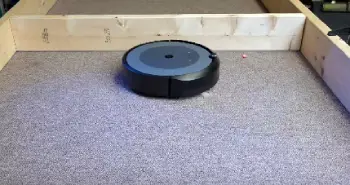
These vacuums suit pet owners or small-home dwellers needing basic smart cleaning.
I’d suggest them for carpets and pet hair but not for large homes or hardwood-heavy spaces.
They’re great for hands-off daily upkeep if you get the Plus models, but frequent maintenance and app issues may frustrate.
If you want affordability over premium features, you’ll like them, but look elsewhere for advanced navigation or mopping.
Safety and Precautions
Place the dock on a flat surface to avoid tipping.
Keep cords and small objects clear to prevent jams.
Check for wet spills, as neither model mops.
Update the app to avoid connectivity issues.
Empty the Clean Base bag safely to avoid dust exposure.
You’ll keep your Roomba running smoothly with careful setup and regular checks.
Also Read: Comparison of iRobot Braava jet m6 6110 Vs. 6012 Robot Mops
Frequently Asked Questions (FAQs)
The i4 edges out with longer battery life (100 vs. 75 minutes) and a virtual wall, but both perform similarly. The i3 is cheaper, so choose based on budget and home size.
Yes, the i4 uses iAdapt 3.0 for smart mapping, creating basic home maps for neat row cleaning, but lacks keep-out zones.
The Roomba j7+ is often tops for obstacle avoidance and mapping, but the i3/i4 suits budget-conscious pet owners.
The i4+ self-empties with the Clean Base, holding 60 days of debris; the base i4 requires manual emptying.
Final Thoughts
The Roomba i3 and i4 shine for pet hair and smart navigation, but Wi-Fi issues, missed debris on hardwood, and high maintenance hold them back.
At ~$250-$350, they’re decent but not flawless.
You’ll enjoy the convenience of the Plus models, but other brands offer better mapping or mopping for similar prices.
Try them if pet hair is your main issue, but don’t expect a perfect clean.


